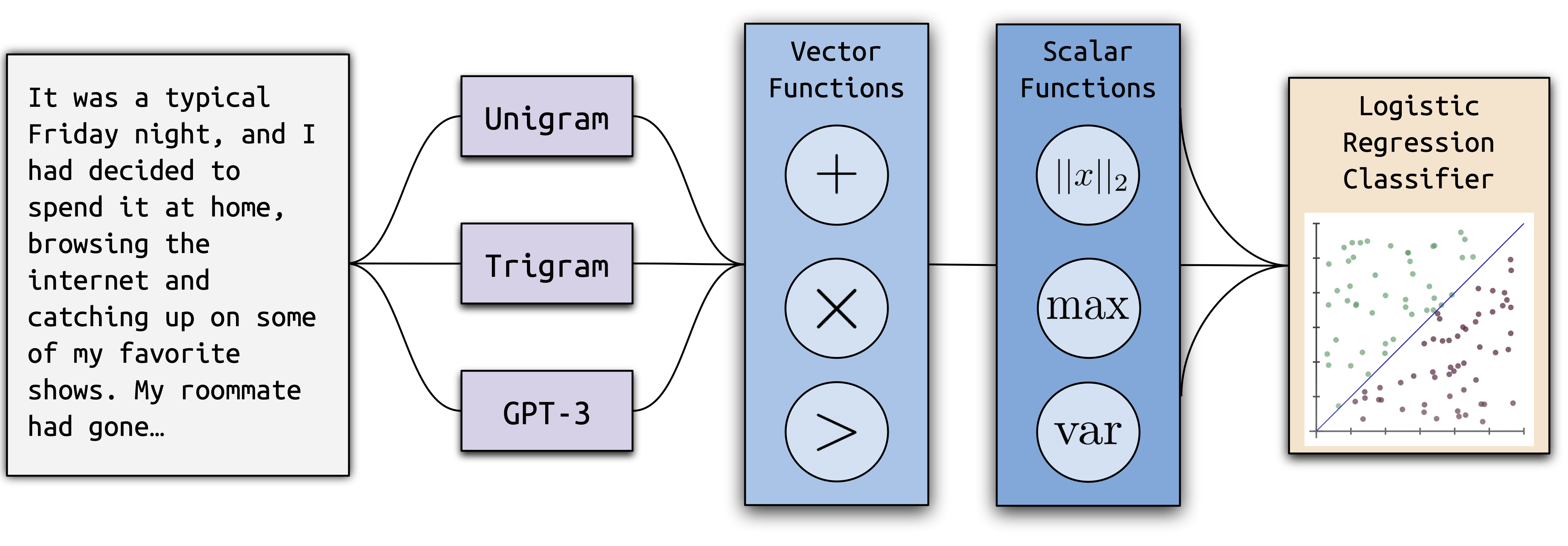Ghostbuster is a new method for detecting AI-generated text. It addresses the problem of large language models, like ChatGPT, being used for ghostwriting assignments and producing text with factual errors. Ghostbuster works by finding the probability of generating each token in a document under several weaker language models. It doesn’t need to know the specific model used to generate the document, making it useful for detecting text potentially generated by unknown or black-box models. Ghostbuster achieves high performance across different domains, prompts, and models and can be used for various applications, such as filtering language model training data and identifying AI-generated content on the web.

The Power of Ghostbuster: Detecting AI-Generated Text
AI-generated text has become a growing concern, with students using language models like ChatGPT to ghostwrite assignments, leading to academic integrity issues. Additionally, there is a need to verify the authenticity of text and detect factual errors in news articles and other sources.
So, what can teachers and consumers do? Existing tools for detecting AI-generated text often struggle with different types of data and can falsely classify human writing as AI-generated. That’s where Ghostbuster comes in.
Introducing Ghostbuster
Ghostbuster is a state-of-the-art method for detecting AI-generated text. It works by analyzing the probability of generating each word in a document under various weaker language models. These probabilities are then used as input to a final classifier. The unique aspect of Ghostbuster is that it doesn’t need to know the specific model used to generate the text, making it effective for detecting text from unknown or black-box models like ChatGPT and Claude.
To ensure its effectiveness, Ghostbuster has been evaluated across different domains, language models, and prompts. It has proven to be robust and outperforms other existing approaches.
Why Choose Ghostbuster?
Many current AI-generated text detection systems struggle with classifying different types of text and fail to capture complex features. Simpler models based on perplexity alone perform poorly on new writing domains, while large language models like RoBERTa overfit to training data and generalize poorly. Ghostbuster strikes the right balance, capturing complex features effectively and demonstrating superior performance.
How Ghostbuster Works
Ghostbuster follows a three-stage training process:
- Computing probabilities: Each document is converted into vectors by calculating the probability of generating each word under weaker language models.
- Selecting features: A structured search procedure is used to select the best combinations of vector and scalar operations that combine the probabilities.
- Classifier training: A linear classifier is trained on the selected probability-based features and additional manually-selected features.
Impressive Results
Ghostbuster has demonstrated impressive performance across various domains and conditions. It achieved 99.0 F1 when trained and tested on the same domain, outperforming other models by a significant margin. Even out-of-domain, Ghostbuster achieved 97.0 F1 on average, surpassing other approaches. Its robustness to prompt variants and ability to generalize across models have also been validated.
Practical Applications
Ghostbuster can be a valuable tool for detecting AI-generated text in real-world scenarios. It can help filter AI-generated text from language model training data, identify AI-generated content on the web, and ensure the integrity of student assignments. However, it’s important to exercise caution and avoid automatic penalization without human supervision.
Conclusion
Ghostbuster represents a significant advancement in AI-generated text detection. Its state-of-the-art performance, ability to generalize, and independence from specific language models make it a powerful solution. With Ghostbuster, you can confidently detect and address the challenges posed by AI-generated text.
Unlock the Potential of AI for Your Company
Discover how AI can transform your business and gain a competitive edge. Partner with Ghostbuster and embrace the following steps:
- Identify Automation Opportunities: Locate key customer interaction points that can benefit from AI.
- Define KPIs: Ensure your AI initiatives have measurable impacts on business outcomes.
- Select an AI Solution: Choose customizable tools that align with your needs.
- Implement Gradually: Start with a pilot, gather data, and expand AI usage judiciously.
For AI KPI management advice, connect with us at hello@itinai.com. Stay updated on leveraging AI by following us on Telegram or Twitter @itinaicom.
Spotlight on a Practical AI Solution: AI Sales Bot
Explore the AI Sales Bot from itinai.com/aisalesbot. This powerful tool automates customer engagement 24/7 and manages interactions across all stages of the customer journey. Redefine your sales processes and customer engagement with AI.
List of Useful Links:
- AI Lab in Telegram @aiscrumbot – free consultation
- Ghostbuster: Detecting Text Ghostwritten by Large Language Models
- The Berkeley Artificial Intelligence Research Blog
- Twitter – @itinaicom

























